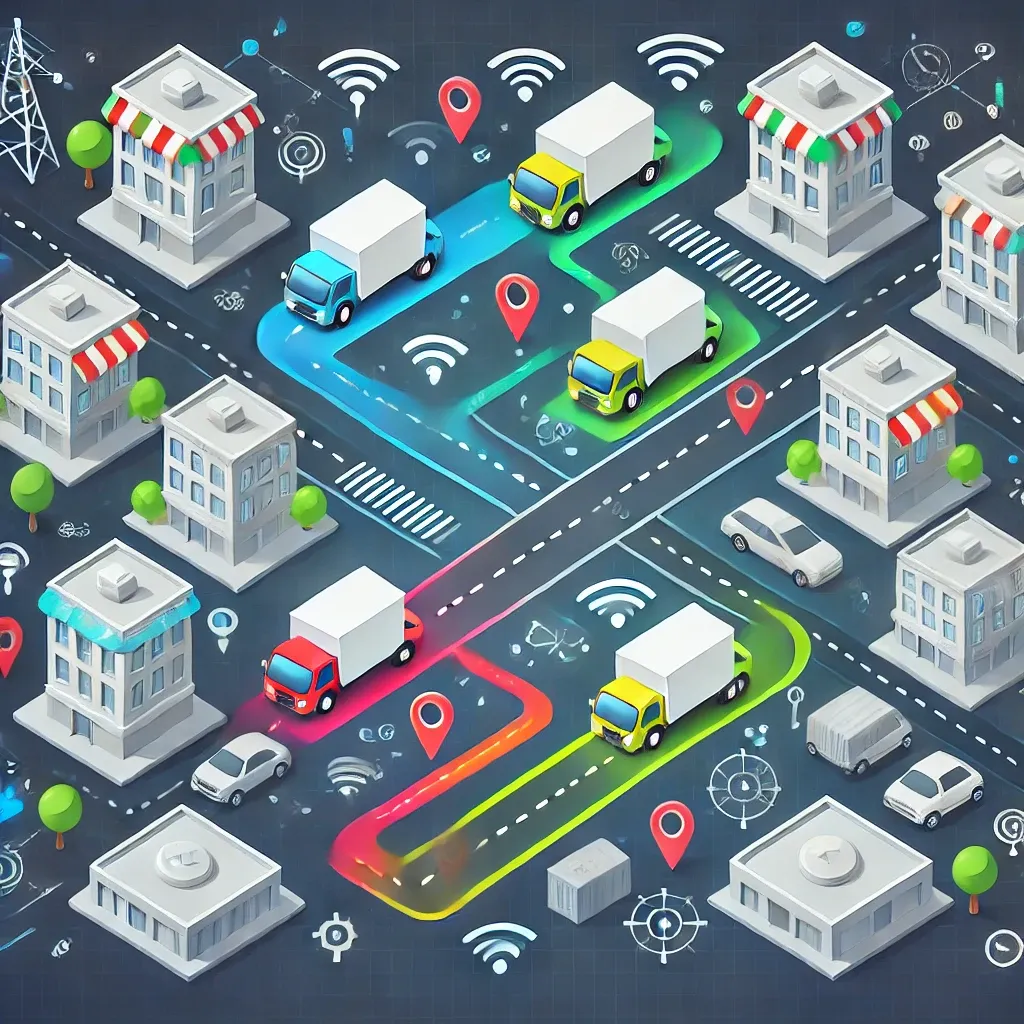Introduction: The Rise of E-Commerce and the Delivery Challenge
The explosive growth of e-commerce has heightened consumer expectations for faster delivery times. This surge in demand poses a significant logistical challenge: how can delivery companies meet these expectations while minimizing costs? Route optimization has become critical as it directly affects fuel expenses, delivery speed, and customer satisfaction. By leveraging artificial intelligence (AI), particularly in route optimization, the delivery process is being transformed into one that is faster, more efficient, and more cost-effective.
What is Route Optimization, and Why Does It Matter?

Route optimization is the process of determining the most efficient path for a delivery vehicle to complete its deliveries. This process considers factors such as distance, traffic conditions, delivery time windows, and vehicle constraints. Optimized routes help reduce fuel usage, shorten delivery times, and maximize the number of deliveries completed in a single trip.
The complexity arises from the vast number of possible route combinations. For instance, a van with 10 delivery stops has over 3 million potential stop orders. Calculating the best route manually is impractical, which is why AI has become indispensable in solving this challenge efficiently.
How AI Solves the Route Optimization Problem
AI is uniquely equipped to handle large datasets and complex calculations, using historical and real-time data to provide optimal routes. Key AI technologies applied in route optimization include:
- Machine Learning for Predictive Analysis: By analyzing past delivery data, machine learning models can predict the most efficient routes based on historical trends and patterns.
- Shortest Path Algorithms: Techniques like Dijkstra’s Algorithm and A* (A-star) identify the shortest path between points, forming the basis of an efficient delivery sequence.
- Genetic Algorithms: Inspired by natural selection, these algorithms evaluate numerous route combinations and refine them to find the most efficient one, especially for large-scale delivery networks.
- Traffic Prediction and Real-Time Adjustments: AI systems analyze live traffic data, rerouting drivers to avoid congestion and delays, ensuring on-time deliveries.
Step-by-Step Process of AI-Driven Route Optimization

- Data Collection
AI gathers data from various sources, including delivery locations, traffic updates, weather conditions, and customer requirements. Historical data enhances predictive accuracy. - Route Planning with Algorithms
Shortest-path algorithms identify the best paths between stops. For more complex networks, genetic algorithms evaluate and refine route combinations to achieve optimal efficiency. - Real-Time Traffic and Weather Monitoring
AI systems constantly track live traffic and weather conditions, adjusting routes as necessary to avoid delays and disruptions. - Dynamic Re-Routing
When new deliveries are added or unexpected events occur, AI systems can dynamically recalculate routes, ensuring efficiency even in changing circumstances.
Real-World Benefits of AI-Powered Route Optimization
- Reduced Fuel Costs: Shorter routes mean less driving time and lower fuel consumption, resulting in significant savings.
- Faster Deliveries: By avoiding delays and optimizing travel paths, AI ensures faster delivery times.
- Lower Carbon Emissions: Efficient routes reduce idling and unnecessary driving, decreasing emissions and promoting environmental sustainability.
- Enhanced Customer Satisfaction: Accurate and timely deliveries lead to happier customers and greater brand loyalty.
Examples of AI Route Optimization in Action
- UPS’s ORION System: UPS’s AI-powered ORION system calculates optimal routes for drivers, saving millions of gallons of fuel annually.
- Amazon’s AI Logistics: Amazon uses AI to plan precise routes, predict delivery times, and adjust paths in real-time, maintaining efficiency and punctuality.
Challenges in AI Route Optimization
While AI has significantly advanced route optimization, challenges remain:
- Data Accuracy: Inaccurate traffic data or delivery information can lead to suboptimal results.
- Scalability: Optimizing thousands of delivery vehicles requires substantial computational power. Cloud computing helps mitigate this but remains a resource-intensive task.
- Handling Unexpected Events: While AI can adapt to many situations, unforeseen events like sudden road closures still present challenges.
The Future of AI in Delivery Optimization
The future promises even smarter and more integrated systems. Advancements in IoT devices and predictive analytics will enable vehicles to communicate and share data, facilitating a more coordinated and efficient delivery ecosystem. Such innovations could lead to smoother urban logistics, reduced road congestion, and unparalleled delivery precision.
Conclusion: The Path to Efficient, Sustainable Deliveries
AI-powered route optimization is revolutionizing logistics by making deliveries faster, greener, and more cost-effective. As technology evolves, businesses can embrace these advancements to stay competitive, improve sustainability, and meet customer demands for reliability and efficiency. By leveraging AI, the delivery industry is well-positioned to thrive in the dynamic world of e-commerce and logistics.




